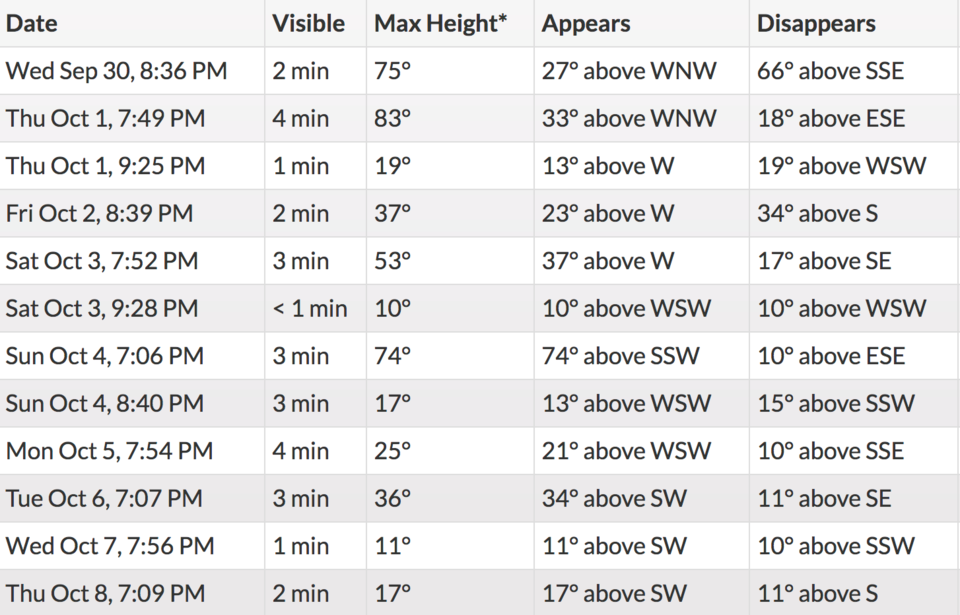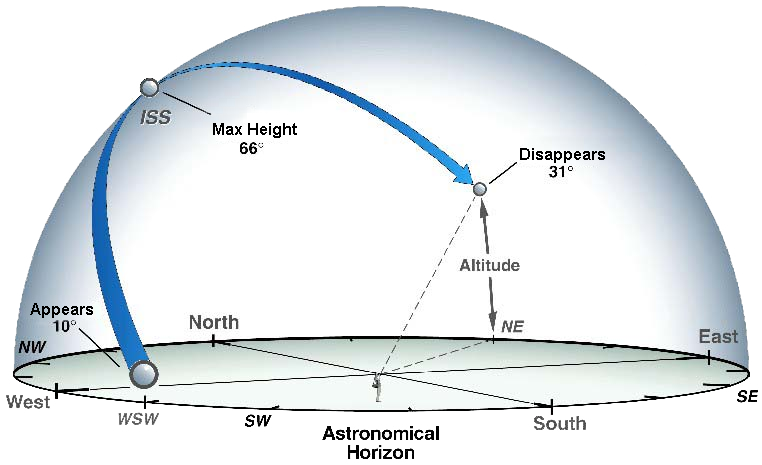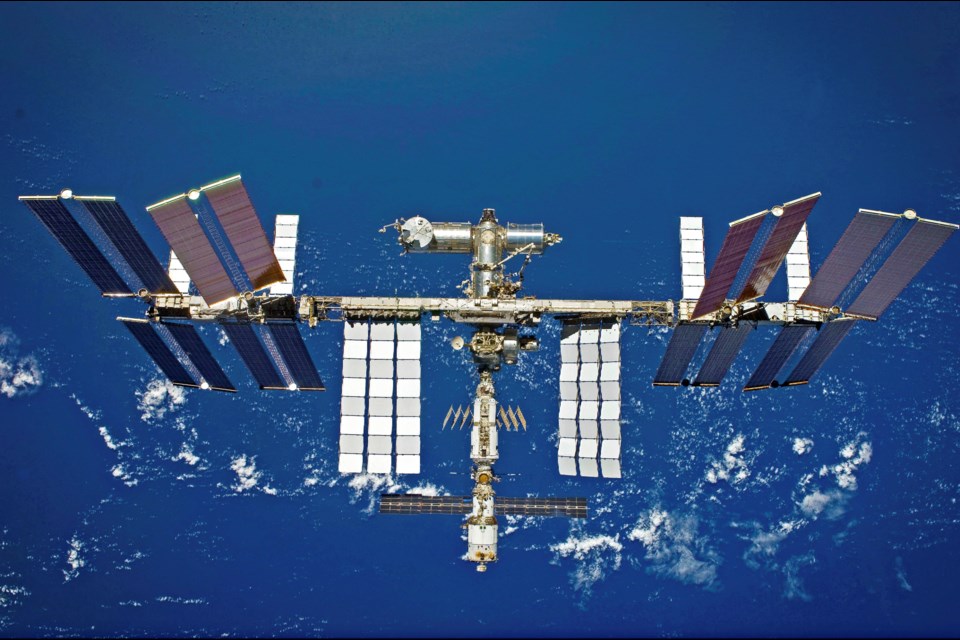Residents of the Tri-Cities will have a chance to spy the International Space Station with their naked eye in the coming weeks as its orbit tracks across local skies.
That’s according to Mission Control at NASA’s Johnson Space Center in Houston, Texas which determines ISS sighting opportunities several times a week in over 6,700 locations worldwide.
Due to the Earth’s rotation, the “weightless laboratory” appears to travel from west to east over the planet. Looking up at the right time and in the right place is key to catching a glimpse of what will look like “an airplane or a very bright star moving across the sky,” according to NASA. However, unlike an aircraft, it will not flash or change direction.
Flying at roughly 28,000 kilometres an hour at about 400 kilometres above the Earth, it takes only 90 minutes for ISS to complete a full revolution around the planet. That means astronauts working aboard the station witness 16 sunrises and sunsets every day, according to the European Space Agency.
Cloud cover aside, there are a few complications. First, a full Harvest moon set to light up Tri-City skies tonight while haze from wildfires in Northern California may obscure the view.
Still, there will be several opportunities to see ISS up until Oct. 15:

Note that “visible” refers to the maximum time period the space station can be seen before it dips below the horizon again; “max height” is the height above the horizon measured in degrees; and “appears” and “disappears” and the locations in the sky where it will be enter and exit your field of view, respectively.
Pro tip from NASA: “If you hold your fist at arm’s length and place your fist resting on the horizon, the top will be about 10 degrees.”




